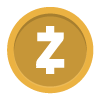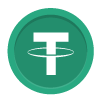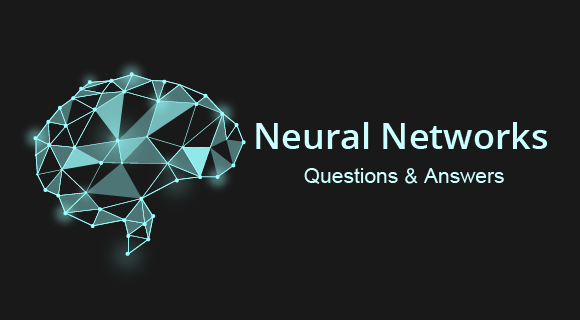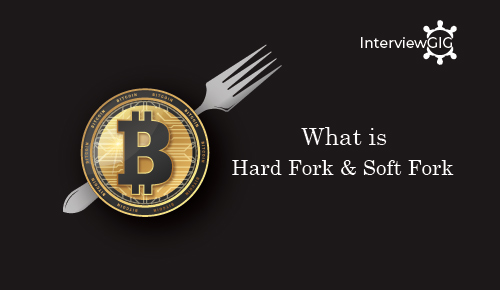Cryptocurrency is a digital currency or virtual currency and that is based on cryptography. It is a high risk investment. It is mainly used for security.There are number of cryptocurrencies (appx 1658) available in the market. The new cryptocurrency can be created at any time.
Below is a list of Top 30 important cryptocurrencies are
1.Bitcoin(BTC)

Bitcoin is a first released digital currency or virtual currency that was created in 2009 by Satoshi Nakamoto. IT offers the promise of lower transaction fees than traditional online payment mechanisms and is operated by a decentralized authority, unlike government-issued currencies. (Description: Gold, Digital Gold)
2.Ethereum (ETH)

Ethereum is an open software platform based on blockchain technology that enables developers to build and deploy decentralized applications. Ethereum, launched in 2015 by Vitalik Buterin. (Description: Running smart contracts, money and Programmable contracts)
3.Ripple (XRP)

Ripple is a real-time gross settlement system (RTGS), currency exchange and remittance network created by the Ripple company. It was created by Chris Larsen in 2012 (Original authors of ripple: Arthur Britto, David Schwartz, Ryan Fugger). It was designed to move hug amount of money Quickly transfer and reliably. For example: USD, Yen, Litecoin, or bitcoin. (Description: Enterprise payment settlement network and international bank transactions)
4.Bitcoin Cash (BCH)

Bitcoin Cash, initially defined by the Bitcoin ABC software implementation, was set to fork on August 1, 2017 at 12:20 p.m. UTC. Bitcoin Cash increases the size of blocks, allowing more transactions to be processed. (Description: Bitcoin clone and high volumes of transactions differently.)
5.Cardano (ADA)

Cardano is a fully open source platform based on blockchain technology. It is a decentralised public blockchain and cryptocurrency project. It was created by blockchain development firm Input Output Hong Kong (IOHK) and led by Charles Hoskinson, former co-founder of BitShares, Ethereum and Ethereum Classic.First Cardano was released on September 29, 2017. (Short Description: Smart contracts and decentralisation and metadata)
6.Litecoin (LTS)

Litecoin was created by Charlie Lee in 2011. this cryptocurrency is designed for lower cost and fast transaction. Litecoin is sometimes referred to “digital silver”. (Short Description: Fast transaction and faster bitcoin)
7.EOS (EOS)

EOS is a blockchain technology basically like Ethereum which has been brought to life by Dan Larrimer. He is also the creator of Steem and BitShares. On June 26, 2017 the project starts its ICO. It is aiming to become a decentralized operating system which can support industrial-scale decentralized applications. (Short description: Ethereum killer and fast transactions and Decentralized applications on Web Assembly)
8.Stellar (XLM)

Stellar is an open-source protocol for value exchange founded in early 2014 by Jed McCaleb (creator of eDonkey) and Joyce Kim. Stellar is a platform that connects banks, payments systems, and people. Integrate to move money quickly, reliably, and at almost no cost. (Short Description: Digital IOUs)
9.NEM (XEM)

NEM uses PoI, also known as proof-of-importance. NEM is also superior in security. It uses EigenTrust++ for node reputation, which is not used in any other cryptocurrency, and strengthens the security of the network considerably. It also uses localized spam protection, which shuts down spammers, and only the spammers, when the network is at full capacity. Originally intended to be a fork of NXT, the community decided to go with a completely new codebase with an alpha version released June 25, 2014, and the first stable release March 31, 2015.(Short Description: Build smart contract application and Batteries-included digital assets)
10.TRON (TRX)

Tron Foundation was established in September 2017 by current CEO Justin Sun. Tronix (TRX) is the official currency of TRON, which aims to be a decentralized entertainment content sharing platform eventually leveraging blockchain and peer-to-peer (p2p) network technology. (Short description: TRON is an attempt to heal the internet and In-app-purchases)
11.IOTA (MIOTA)

IOTA is the first cryptocurrency without a blockchain. IOTA is an open-source distributed ledger protocol that goes ‘beyond blockchain’ through its core invention of the blockless ‘Tangle’. It is third-generation cryptocurrency offering free, real-time microtransactions between Internet of Things (IoT) devices. Allows future technology to transact without humans. David Sonstebo, Sergey Ivancheglo, Dominik Schiener, and Dr. Serguei Popov founded IOTA in 2015. (Short description: Future Internet-of-things payments).
12.NEO (NEO)

NEO was originally launched in 2014 as AntShares with development resources provided by founder Da Hongfei through his development company Onchain. NEO is a blockchain platform that facilitates the development of digital assets and smart contracts. The platform uses two different tokens (similar to Ethereum): the first is also called NEO, the second is GAS. Both tokens have specific uses on the NEO platform. (Short description: First Chinese cryptocurrency-market Ethereum and smart contracts)
13.Zcash(ZEC)

Zcash, a decentralized and open-source cryptocurrency launched in the latter part of 2016, looks promising. “If Bitcoin is like http for money, Zcash is https,” is how Zcash defines itself. Zcash offers privacy and selective transparency of transactions. Zcash is set to launch on the 28th of October 2016 and has a hefty heavy weight team working on it and backing it. These include names such as Roger Ver and Barry Seibert as well as Pantera Capital-Founded by Zooko Wilcox-O’Hearn. Zcash uses a special proof to secure the network called zk-snark – or proof of construction. (Short description: zk-snark and Private digital cash).
14 Dash(DASH)

Dash (Dark coin) is an open source peer-to-peer cryptocurrency with a strong focus on the payments industry. Based on the Bitcoin project, Dash aims to be the most user friendly and scalable payments system in the world. It was originally released as XCoin on January 18, 2014. The founder, Evan Duffield, proposed a series of improvements to Bitcoin’s protocol. (Short description: the first privacy-centric cryptographic currency and focused Bitcoin clone)
15 Monero (XMR)

Monero is a secure, private and untraceable currency. This open source cryptocurrency was launched in April 2014 and soon spiked great interest among the cryptography community and enthusiasts. The development of this cryptocurrency is completely donation-based and community-driven. It was created by Nicolas van Saberhagen in 2014. (Short description: Private digital cash)
16 Tether (UDST)

Tether is a cryptocurrency token issued on the Bitcoin blockchain. It is a cryptocurrency token claimed by its creators to be backed by one dollar for each token issued, though Tether Limited has not issued a promised audit of their currency reserves. The precursor to Tether, originally named “Realcoin”, was announced in July 2014 by Realcoin cofounder Brock Pierce as a Santa Monica based startup. (Short description: UDST =1USD)
17.Bitcoin Diamond (BCD)

Bitcoin Diamond (BCD) is a fork of Bitcoin that occurs at the predetermined height of block 495866 and therewith a new chain will be generated as the BCD. Bitcoin Diamond miners will begin creating blocks with a new proof-of-work algorithm and will consecutively develop and improve the transaction speed based on original features of BTC. BCD was launched in November 2017 when cryptocurrencies were performing extremely well.100 million satoshi = 1 BTC. With Bitcoin Diamond, 10 million satoshi = 1 BCD. (Short description: new proof of work algorithm and fast transactions)
18.Ontology(ONT)

Ontology is a new generation public blockchain project and a distributed trust collaboration platform. Ontology provides new high-performance public blockchains that include a series of complete distributed ledgers and smart contract systems. It was launched in Mar 2018. (Short description: Smart contract systems)
19.Qtum(QTUM)

Qtum is an open source Blockchain project that is developed by the Singapore-based Qtum Foundation. Qtum is a hybrid blockchain application platform. It is a decentralized Blockchain application platform, capable of running smart contracts on multiple virtual machines, with Proof-of-Stake consensus. The coin was launched during an initial coin offering (ICO) in March 2017. (Short description: Ethereum smart contracts on Bitcoin)
20 Binance Coin(BNB)

Binance Coin is the coin used to facilitate operations on the Binance platform, a cryptocurrency exchange that is capable of processing 1.4 million orders per second. The name “Binance” is derived from the combination of the terms “binary” and “finance”, referring to the integration of digital technology and finance. The coin was launched during an initial coin offering (ICO) in July 2017. (Short description: Binance exchange)
21.Ethereum Classic(ETC)

Ehereum Classic is an open-source, public, blockchain-based distributed computing platform featuring smart contract (scripting) functionality. It provides a decentralized Turing-complete virtual machine, the Ethereum Virtual Machine (EVM), which can execute scripts using an international network of public nodes.This platform announced in July 2015 when the original Ethereum (ETH) blockchain was hard-forked following a security breach. (Short description: Ethereum clone and smart contracts)
22.Vechain(VEN)

VeChain is a leading enterprise-focused dApp/blockchain application platform for products, services, and data. VeChain believes that blockchain alone cannot realize much of the application scenarios on its own, that blockchain technology has to combine with other technologies to provide multipurpose use. VeChain began in 2007. The VeChain coin launched in 2015. VeChain first tried to apply an open blockchain network to the internet of things in late 2016. (Short description: dApp and Supply chain item IDs)
23.OmiseGO (OMG)

OmiseGO is building a decentralized exchange, liquidity provider mechanism, clearinghouse messaging network, and asset-backed blockchain gateway. OmiseGO is a startup by Jun Hasegawa and Donnie Harinsut, the founders of the already operating company Omise, which was founded in 2013, in Bangkok, Thailand. It works worldwide and with both traditional money and cryptocurrencies. (Short description: Banking, remittance, and decentralized exchange)
24.Bytecoin (BCN)

Bytecoin is an open-sourced, private and untraceable cryptocurrency that was started in 2012.This is the first cryptocurrency based on the CryptoNote technology. Bytecoin (BCN) was released to the public on March 2014. Developers of the cryptocurrency had faked its discovery in 2014, claiming it was up and running from 2012. (Short description: Proof of work performance and unlimited transactions and privacy focused)
25.Lisk(LSK)

Lisk is a decentralized network, like Bitcoin and Litecoin, which enables developers to deploy their own side chains off the main Lisk blockchain’s is an early-stage platform for developers to create their own Blockchains and Javascript smart contract applications. Lisk was forked from Crypti by Max Kordek and Oliver Beddows in May of 2016. (Short description: Decentralized applications in JavaScript and smart contract applications)
26.ICON (ICX)
![]()
ICON is built to act as a platform where Decentralized Apps (DApps) and Smart Contracts can be built on. The ICON blockchain interlinks cryptos hence making it more unique than Ethereum. ICX can be used as for DApp tokens U-coin. This coin Launching in 2017. ICON is a blockchain technology firm located in South Korea. ICON is also popular for being known as South Korea’s Ethereum. (Short description: DApps-Southkorea coin)
27.Zilliqa (ZIL)

Zilliqa is the world’s first high-throughput public blockchain platform – designed to scale to thousands of transactions per second. Zilliqa (ZIL) was introduced in the cryptocurrency market on 26th January 2018. (Short description: High speed blockchain -sharding)
28. Aeternity (AE)

Aeternity is one of the cryptocurrencies which were launched in june 2017. It is a scalable blockchain platform. It is designed to enable pure functional smart contracts, decentralized oracles and transacting using high bandwidth. (Short description: Smart contracts and high bandwidth)
29.Steem (STEEM)

Steem is the first blockchain to set out to disrupt the world of social media. Users create and curate content on Steemit just like other social news platforms (e.g. Reddit, Hacker News) and get rewarded in Steem for their work. Teem was launched in March 2016. (Short description: Blockchain social media platform)
30.Decred (DCR)

Decred is similar to normal money. It’s a currency. The big difference: Decred is designed to be completely autonomous, open source, and driven by the community. No central banks needed. Decred was launched in February 2016 by the bitcoin developers that engineered btcsuite. (short description: similar to Bitcoin)
Note: This list is constantly changing and this article is our opinion. Before making any investment decisions you should consult with a professional or personal guidance.





